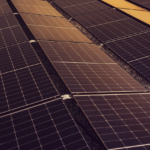
Transfer cases work by transferring power to either the front wheels for a two-wheel drive or rear wheels for four-wheel drives. Two-wheel drive power transmission is from the rare driveshaft to rear differential while 4WD the power is split in the torque hence engaging both the front and rear driveshafts then to both the front and rear differentials. Before the transfer cases were gear driven and only had one gear ratio but currently the transfer cases have been made to have two gear ratios and use chain drive. This change in the operation through chain drive allows for more power options for driving under different conditions.
Chain drive transfer cases have fluid within the case that ensures lubrication and heating. A pump is also needed to help make the fluid circulate through the transfer case carrying the automatic fluid or auto-trak II fluid. The fluid degrades and therefore requires regular services since no dipstick helps to find the level of the fluid or its condition like in the case of chevy transfer cases. The major problem with this model of transfer cases is the design of the pump’s relation to the case layout. The design of the pump has ear edges that fit into the transfer case model.
The transfer case for a 4WD pump is made in a way that it floats while being kept in position with the ears on the pump. Due to the ears inside the case, they get worn out and start rubbing against the case and continuous ribbing leads to the formation of holes in the case. The hole causes leaking of the fluid in the case and may continue leaking when the vehicle is parked. While moving, however, the pump exerts pressure on the fluid hence no visible leaks. Most people will not notice the vehicle has this issue unless they check it from under since you notice it has a wet surface due to the fluid being transferred to the outside by the pump. The fluid leaked can be in the form of splashes on the vehicle’s underside. Reduction in the amounts of fluid in the transfer case makes it ineffective and gets overheated and starts to produce a lot of noise.
Cases that already have holes cannot be just fixed, instead, they need to be rebuilt. That involves the replacement of the case with holes with another transfer case which may be expensive. However, if the repair is to be done before the case gets a hole in it, the procedure will be more affordable since it will only require the application of preventive measures. A case saver can be installed by an expert to help to prevent the continuous movement of the pump hence minimum rubbing on the transfer case. A case saver has indexes that protect the areas where the floating pump’s teeth rub. The preventive repair option is more affordable than the rebuilding solutions.
People who drive 4WD such as Chevrolet trucks and SUVs built in earlier years should be quick in addressing the problem before it escalates and requires an expensive repair. These services are offered by experienced technicians who have expertise in rebuilding and repairing transfer cases. They can also examine and test for the rubbing effects of the pump and repair it with quality product options. Additionally, the transfer fluid should be replaced every 30000 miles to ensure it stays free from debris and functions properly.
Despite the problems that arise due to transfer cases and expensive replacement problems, 4WD is very effective to use especially on slippery roads, and only perfect when utilized properly by someone who knows how to handle them. Most 4WD with a two-speed transfer case have a low range option. The low range is useful in driving conditions such as driving through deep sand, mud, or snow, It also helps to prevent severe off-roading when driving and speeding over obstacles hence the vehicle has the added advantage of stopping in steep grades without breaking causing overheating of the brakes.
Another valuable feature due to the type of transfer case on $WD is the high range 4WD. To shift from the low range to high range, one has to first transfer to neutral which enables the torque to be disconnected hence allowing the transfer case to change gears. The same procedure applied when changing from high range to low range. The low range should not be used for driving under dry surface conditions since the undue stress applied in the transfer cases may lead to damages.



